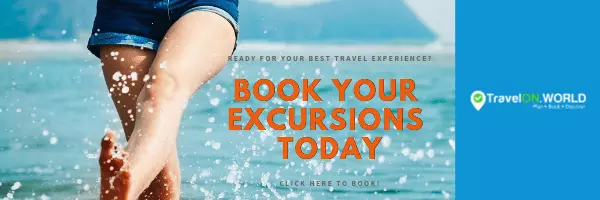


12 of the best things to do in Fuerteventura
Fuerteventura is the second largest, and oldest, island in the Canaries Archipelago. Dating back around 20 million years it now proudly boasts some of Europes top 25 beaches and is popular with water-sports enthusiasts from all over the continent.
Although Fuerteventura is a volcanic island it hasn’t seen any activity for over 4000 years, with Calderón Hondo being its most famous volcano and around 50,000 years old. Due to the weather much of the volcanic landscape has been slowly eroded over the years, however it is still very much prominent in certain parts of the island.
Other interesting facts about Fuerteventura are that it has the largest Aloe Vera plantation in Europe and Goat is a staple diet of the islanders where they locally produce cheese, and enjoy stewed and roasted goat meat.
And for holidaymakers there are plenty of things to see and do in Fuerteventura. Here is our top 12.
1. Oasis Park
Oasis Wildlife Park is a conservation zoo located in the Jandia (Southern) region of the island. It’s a great family day out and has animal interaction and live shows throughout the day.
When you visit Oasis Park in Fuerteventura you can expect to see Camels, Sealions, Lemurs, Giraffes, Elephants and much, much more. There are educational ‘live’ shows where you can learn about birds and botany from around the world.
For those of you that like to go that little bit further, Oasis Park in Fuerteventura offers a number of experience packages where you can get up close and personal with Lemurs, Sealions, Giraffes and more, making your day out at the park even more memorable.
2. The Fuerteventura Sand Dunes
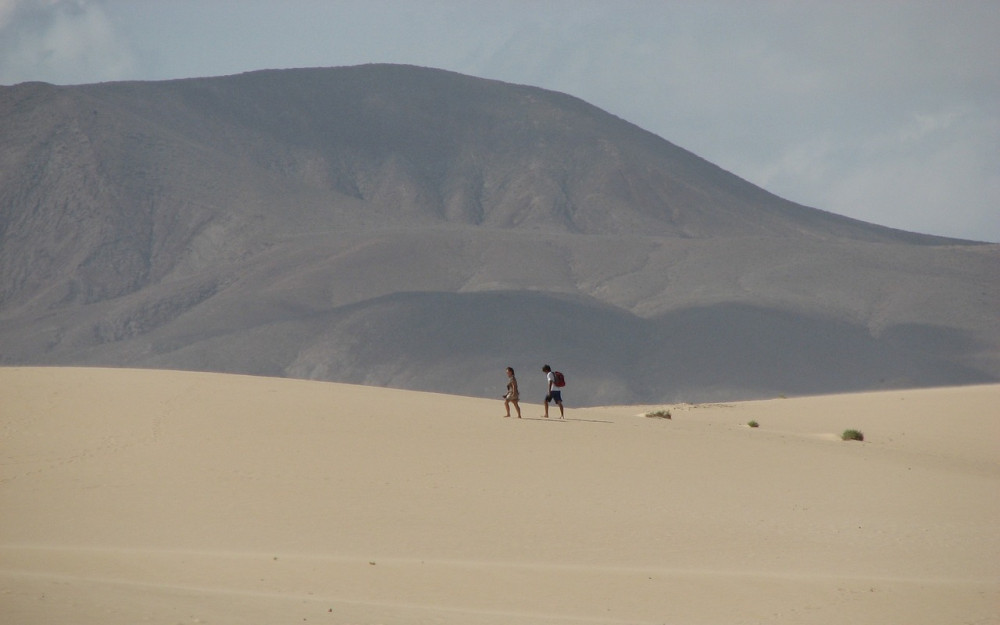
In the North of the island, just to the East of the port town of Corralejo you will find the famous Fuerteventura Sand Dunes.
Contrary to media reports that the dunes were formed by sand blowing from the Sahara, they are 90% organic in composition and consist of the disintegration of marine organisms.
As you might expect, the Fuerteventura sand dunes are extremely popular and one of the most popular areas with tourists. The dunes are met by the crystal clear turquoise waters on one side and contrasting volcanic landscape on the other.
The dunes themselves make up a Natural Park. Its a protected area covering 24 square kilometres and home to a number of species of different wildlife.
3. Popcorn Beach Fuerteventura
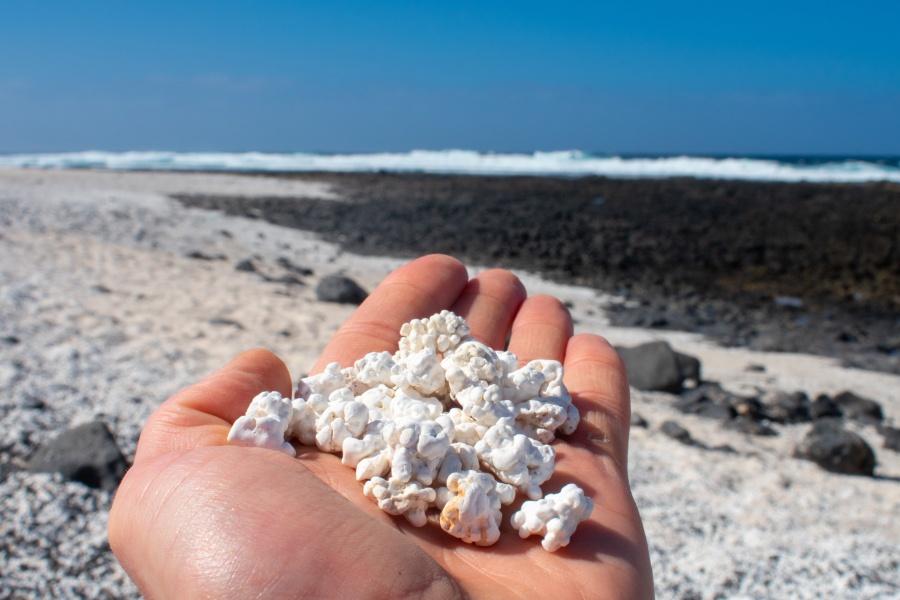
Dubbed one of the secrets of the Canary Islands (although maybe not so much these days), popcorn beach is aptly named after the appearance of the algae that covers the area.
Popcorn beach isn’t your typical sandy, tourist type beach. The algae fossils that cover the beach are white in appearance and resemble, well, popcorn!
Popcorn beach can be found on the north coast of Fuerteventura, to the west of Corralejo. It’s a bit of a trek to reach the beach on foot, taking around 1 hour.
During to the rise in popularity of popcorn beach there is a preservation campaign in place to preserve the area. Whilst its possible to walk on the beach you must leave the ‘popcorn’ in place.
4. Jandia Peninsula Beach
The beach at Jandia stretches for around 21km, and in our opinion is one of the best beaches on the island, if not in Europe. It has been awarded blue flag status.
The sand is a fine grains and light in colour and the large area is a favourite with water-sports and kite buggy enthusiasts.
The beach is extremely clean and you can find public services such as toilets, showers and beach bars at regular intervals throughout the coastline.
The beach is easy to get to from the both Morro Jable and Costa Calma, and if you’re in the mood the trek from one town to the other takes between 5 and 6 hours.
5. Cofete
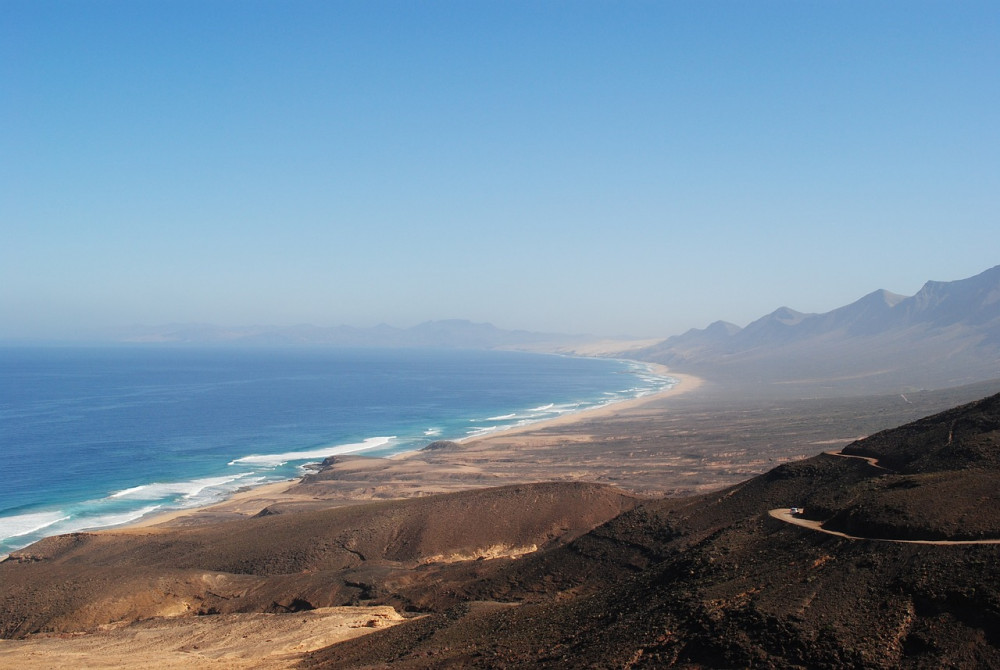
The mysterious and remote area of Cofete is isolated by huge mountains on the south west coast of the island of Fuerteventura. The trail (dirt road) to the 15km long beach can be a little treacherous in places but the reward is stunning mountain views, often huge waves and golden sands. Check the small print of your hire car company as you may not be insured to make this journey. There is also a 4x4 bus service that runs from Morro Jable, but be warned that this does get extremely busy, and local excursion companies run off-road safaris to the area. Another option to get to Cofete is to take a jeep tour around the south of Fuerteventura
It’s not uncommon to find wild donkeys wandering around the parking lot in Cofete and that’s not the only somewhat strange thing here. A small burial ground dating back to the early 19th century can be found here.
6. Punta Jandía Lighthouse
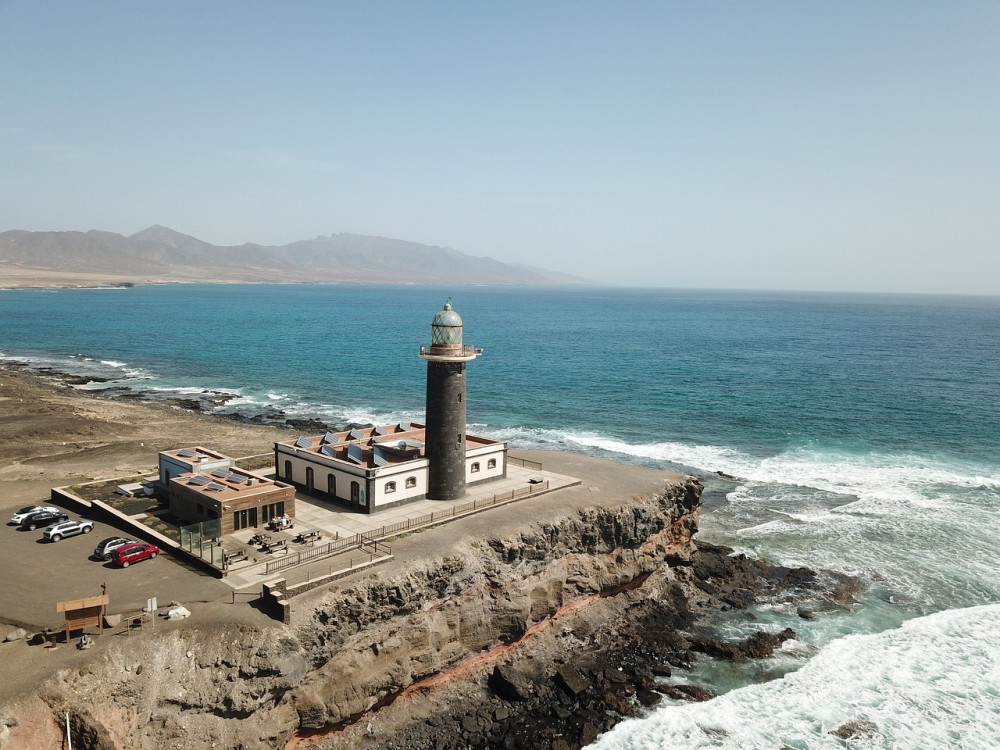
In the south west tip of the island sits the Punta Jandía lighthouse. Dating back to 1864 this is one of the oldest lighthouses in the Canary Islands. The keepers house of the building is now an interpretation centre for the Jandía nature reserve.
It’s a bit of an off-road drive to get to the lighthouse, but is certainly a must see for anyone visiting the area for the first time.
7. Visit the Island of Los Lobos
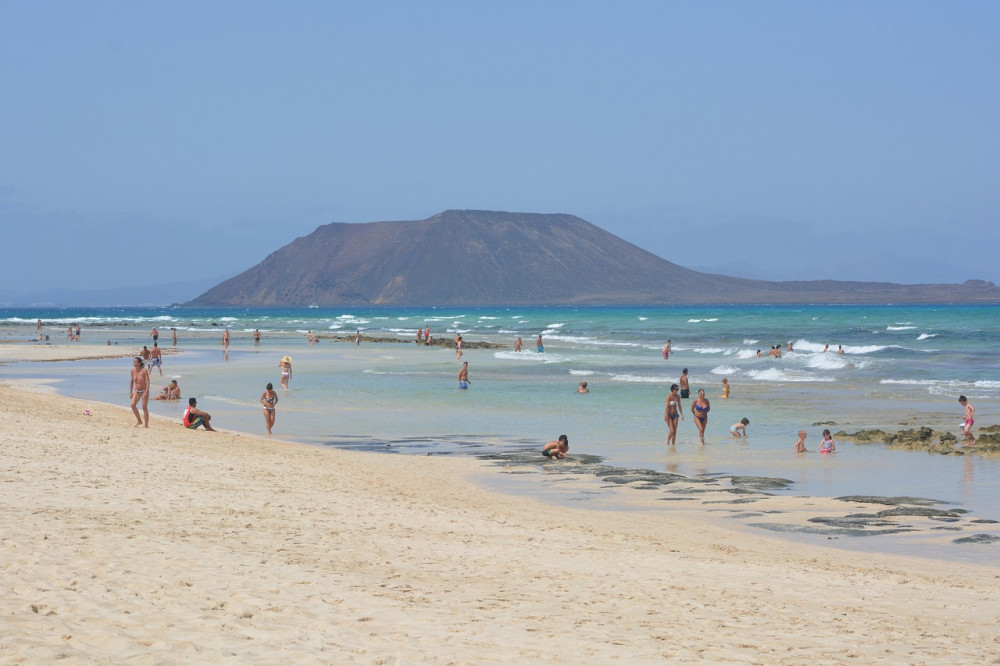
The island of Los Lobos can be found just off the North of the island of Fuerteventura and is very visible from Corralejo and the Fuerteventura Sand dunes.
It’s a designated natural park and inhabited island covered in wild fauna, volcanic landscape and natural lagoons. For those of you that like to hike, there is a path that runs the permitter of the island and for others it’s a great place to chill out and relax away from the busy port town of Corralejo.
There are regular boat trips to Los Lobos, although daily visitor numbers are restricted so you must book in advance.
8. Visit El Cotillo
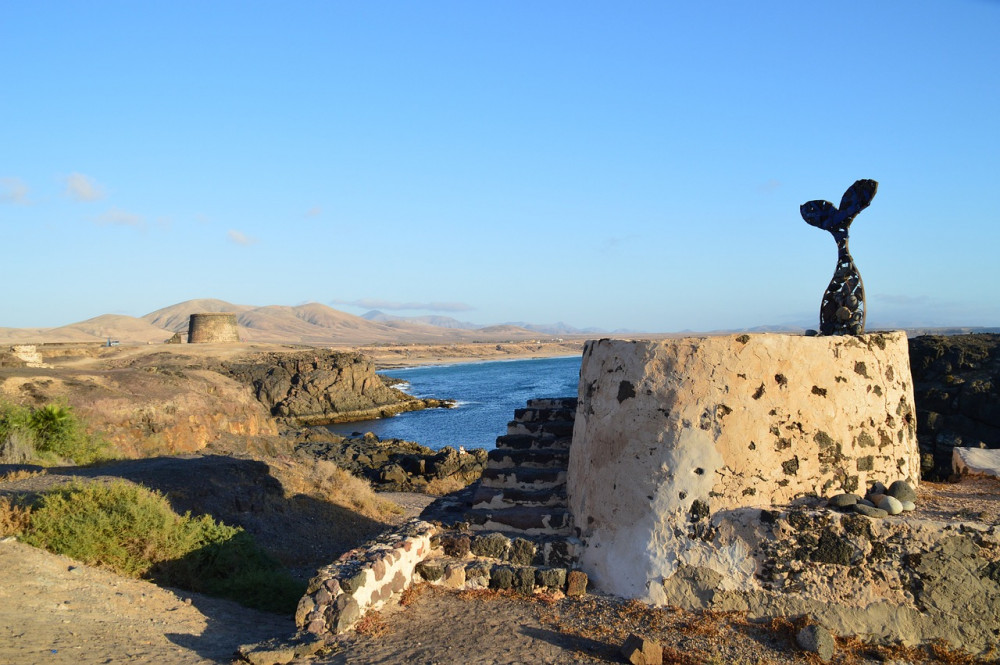
A small village on the Northwest coast, El Cotillo offers visitors stunning beaches and lagoons.
It’s laid back pace of life is favourable with surfers and the town has a bit of a ‘hippy’ vibe to it. You’ll find some fantastic restaurants and bars and a nice, but maybe long, walk to the El Cotillo lighthouse is popular with visitors.
9. The lagoon at Sotavento
One of the top places to visit in Fuerteventura is the lagoon at Sotavento. The chances are you will have seen the lagoon on pictures of Fuerteventura when looking at booking a holiday or reading about the island on websites.
At high tide, the ocean water fills up the lagoon at Playa de la Barca and creates an stunning ‘lake’ that’s great for bathing and water-sports.
It’s the perfect location for taking photos for your social media accounts, as well as just relaxing and soaking up the Fuerteventura sunshine with the breathtaking turquoise waters and blue skies.
10. Visit the Village of Betancuria
Originally the capital of Fuerteventura , the village of Bentancuria is a great place to discover the history of the island. It’s a place full of charm and old buildings that tell stories of the past.
The village can get busy with tourists, and some may find the drive a little challenging as you wind through the mountain roads - which also offer you some of the most amazing views on the island and of course the chance to spot the chipmunks that are native to the island.
11. The Village and Caves of Ajuy
Ajuy is a small village on the west side of the island of Fuerteventura. The restaurants here serve fresh fish against the backdrop of the black volcanic sand and large rolling waves of the Atlantic. The perfect combination as you enjoy one of the best sunset spots on the island.
Another popular attraction of Ajuy is the caves that you can access via the coastal path.
The caves were created by lava flow 100 million years ago and among one of the 150 sites of primary geological interest in the world.
12. Take a ferry to Lanzarote for the day
Lanzarote, the 4th largest island in the Canaries, is just a short ferry journey away from Fuerteventura and has many places of interest such as The Timanfaya National Park, Mirador del Rio, The Green Caves, Jameos del Agua and The Cactus gardens.
It’s possible to take a day trip to Lanzarote to see some of the amazing sites, and be back in Fuerteventura in time to relax and enjoy your evening meal.